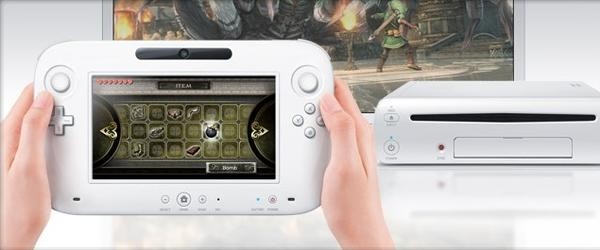Nintendo unveiled the successor to its Wii today at E3, leaving many onlookers baffled. Called the Wii U, the company's next-generation console aims to bridge the gap between casual and hardcore gamers – the latter of which were which were abandoned by the Wii. Nintendo wants the Wii U to offer something for everyone, claiming it "will create a deeper experience for even the most passionate gamers."
The most puzzling thing about the Wii U – apart from its name – is undoubtedly Nintendo's new controller concept. At first glance, it appears to be an entirely separate device, featuring a built-in 6.2-inch touchscreen, speaker, microphone and camera alongside the traditional buttons, directional controls (two analog sticks and a D-pad), as well as sensors including a gyroscope and an accelerometer.
While it may resemble the bottom half of a 3DS, the controller isn't a self-contained system like a portable console. It connects to a separate box that pumps graphics to your TV, just like most other full-scale consoles. However, the Wii U is more flexible, as the controller's integrated screen can serve as your primary (and only) display, allowing you or your family members to use the TV while you play.

When the controller's screen is used in conjunction with your TV, it can enrich the experience by displaying a different view of the game, statistics or whatever else developers dream up. Although the controller is motion-sensitive, we imagine you probably won't want to dance around the living room with it, nor will you want to buy extras for your buddies as they'll probably be pretty expensive – initially, anyway.
Fortunately, the Wii U is backward compatible with Wii games and accessories. It can also handle 1080p video, is powered by an IBM CPU, has internal flash storage along with support for SD cards and USB drives, plays proprietary discs and digital downloads, and is due between next April and December. Launch titles include Batman, Tekken, Assassin's Creed, Metro and other popular franchises.